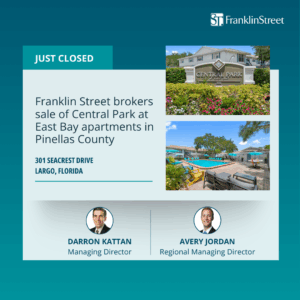ATLANTA—Sale-leasebacks aren’t quite a dime a dozen, but they aren’t exactly few and far between these days either. So what’s the state of the sale-leaseback market, and how can corporations truly unlock real estate value through sale-leasebacks?
GlobeSt.com caught up with Mac McCall, a managing director at Franklin Street, to get his take on the sale-leaseback subject in part one of this exclusive interview. Be sure to check back this afternoon for part two, where McCall will discuss what factors should and do influence sale-leasebacks in today’s market.
GlobeSt.com: How strategies for sale-lease back change through the downturn? Are they changing in the recovery?
McCall: Strategies for sale-leasebacks were very popular during the downtown as traditional financing was very challenging and banks were not willing to provide strong loan-to-value amounts. They remain very hot as banks have not opened the purse strings back to pre-recession levels. Additionally, cap rates continue to remain low so as interest rates tick up business owners can take advantage of all time low cap rates.
GlobeSt.com: For corporations, is monetizing real estate through sale-leasebacks still a useful option? How can it unlock value?
McCall: It is always a useful option for corporations. Traditionally, corporations like to invest in their business as it should produce double-digit returns versus real estate which really only appreciates nominally on a yearly basis. By freeing up the equity tied up in their bricks and mortar they can reinvest in their businesses, pay down debt and clean up their balance sheets.
GlobeSt.com: Can you give me an example of how a sale-lease back unlocked value for a corporate real estate owner?
McCall: We worked with a restaurant group in Atlanta who on a unit level was performing very well. Unfortunately during the economic downtown they expanded too quickly and had too much debt to continue growth. We completed a sale-leaseback for them and they were able to pay their old lenders off, improve their balance sheet and work with more proactive lenders.
Be sure to come back this afternoon for part two of this interview and learn more about when sale-leasebacks are the right option. Download PDF



